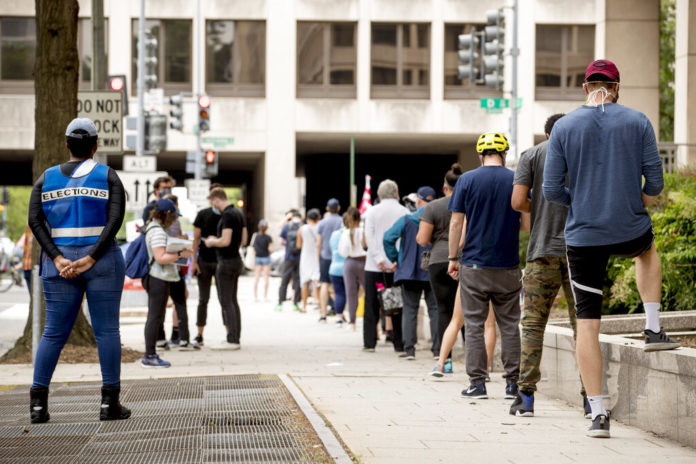
Arizona will be in the national spotlight in November as a presidential battleground and the home of one of the most closely watched Senate contests in the country. But Tuesday’s primary features few big-ticket contests.
Republican Sen. Martha McSally faces a challenge from businessman Daniel McCarthy, who is running to her right with an anti-government message and an appeal to voters who think the response to the pandemic is infringing on individual freedoms. But he’s not well-known and has spent little money to introduce himself to voters.
Mark Kelly, a retired astronaut and the husband of former U.S. Rep. Gabrielle Giffords, faces only a write-in opponent for the Democratic nomination.
A McSally-Kelly contest would pit two former combat pilots against each other in the race to finish the final two years of John McCain’s last term in the Senate. After McCain died in 2018, McSally was appointed to the seat and faces a tough battle to hold onto it.
Among U.S. House races, none is more prominent than the 6th District covering much of north Phoenix, Paradise Valley, Fountain Hills and Scottsdale. Four Democrats are seeking the chance to take on scandal-scarred Republican Rep. David Schweikert in a heavily Republican district. Democrats hope the seat could be in play thanks to a long-running ethics investigation of Schweikert and a growing skepticism of the GOP among white voters with a college degree.
Incumbent Democratic Rep. Tom O’Halleran in the sprawling 1st District is facing a primary challenge from progressive champion Eva Putzova, while three Republicans are facing off to see who will be their party’s candidate in the Democratic-leaning district.
A number of state legislative districts also face ideological battles among either the Republicans or Democrats.
Most Arizona voters who plan to cast a ballot have already done so, but those showing up to vote in person in will find it looks different than elections of the past as the tradition of casting a ballot adjusts to the coronavirus pandemic.
Election officials across the state have encouraged voters to request a mail ballot, and some have expanded options for early voting to reduce crowds on Election Day.
As of July 29, more than 823,000 voters had returned their mail ballots, according to a tabulation by The Associated Press. That’s about 70% of the ballots that were sent out.
In Maricopa County, election officials dropped assigned polling places and are instead opening 99 vote centers that accommodate all voters in the county, regardless of where they live. The county shifted many sites from the smaller libraries, community centers and churches to larger venues like convention centers, malls and retail facilities, said Megan Gilbertson, a spokeswoman for the county elections department.
Poll workers will wear masks, gloves and face shields; disinfect common areas and sanitize pens after each use, she said.
“We have already seen historic participation in this primary election compared to other Maricopa County primary elections,” Gilbertson said.
Pima County Recorder F. Ann Rodriguez said a lot of county poll locations have changed because of problems securing normal locations at churches and schools that were shuttered because of the coronavirus. She advised people to go look up their poll location on the recorder’s website.
Republished with the permission of the Associated Press.












